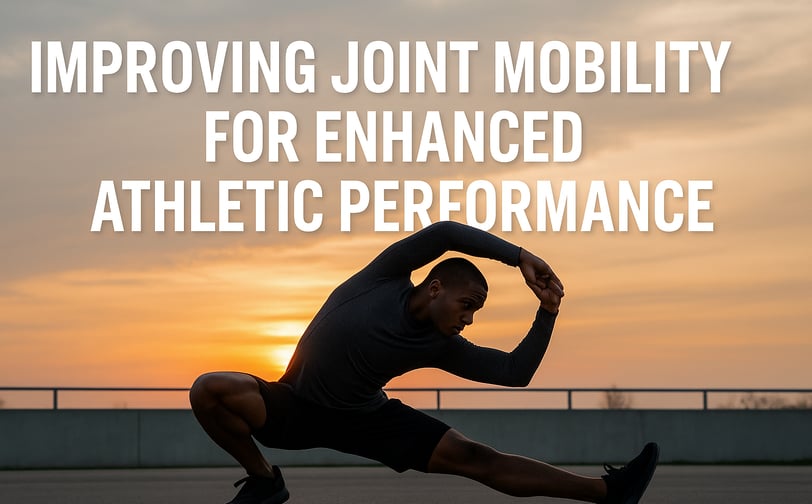Improving Joint Mobility for Enhanced Athletic Performance
Discover effective strategies and top tools to enhance joint mobility, boost athletic performance, and prevent injuries. Learn how to move better and perform at your peak.
5/31/20252 min read


Improving Joint Mobility for Enhanced Athletic Performance
When athletes think about performance, the focus often lands on strength, speed, and endurance. But joint mobility — the ability to actively move a joint through its full range of motion — is one of the most overlooked yet essential factors for peak output. Without mobile joints, your strength is capped, your coordination suffers, and your risk of injury skyrockets.
Mobility isn’t just about being flexible. It’s about control, stability, and strength across movement patterns. You don’t need to be a gymnast, but you do need enough mobility in your hips, shoulders, and spine to perform safely and efficiently.
Why Joint Mobility Matters in Sports
Good joint mobility enables smoother, more efficient movements. If a joint is restricted, the body compensates — usually by shifting strain elsewhere. That leads to overuse injuries, bad posture, and uneven power output. Research in the Journal of Athletic Training found that athletes with limited ankle or hip mobility were significantly more likely to experience knee injuries during dynamic movements.
Whether you’re sprinting, throwing, jumping, or cutting, joint mobility dictates how well you can execute each phase of movement. More range = more potential. But the key is to train it intentionally.
-Product we recommend: Theragun Mini (3rd Gen)
If your muscles are limiting your mobility, release work should be a regular habit — especially after intense training.
This ultra-portable massage gun helps loosen stiff muscles around the hips, shoulders, and spine so your joints can move freely.
It’s powerful but compact, quiet enough for public use, and the battery life lasts up to 150 minutes.
▶️ Check it out on Amazon
Best Ways to Improve Joint Mobility
1. Train Through Full Ranges
Start lifting through complete ranges — deep squats, controlled overhead presses, Jefferson curls. The more you expose your body to end-range positions with load and control, the more mobility you build where it counts.
2. Incorporate Daily Mobility Routines
Dedicate 10 minutes a day to targeted joint work. Hip cars, 90/90 transitions, thoracic openers — all of these movements promote long-term joint health. Doing it consistently is what separates athletes who stay mobile from those who stiffen up over time.
-Product we recommend: TRX All-in-One Suspension Trainer
This is hands-down one of the best tools to build strength and mobility.
With bodyweight exercises like deep rows, hip lifts, or thoracic openers, you can hit full ranges safely while training control.
It’s compact, durable, and easy to anchor anywhere — perfect for mobility-focused athletes.
▶️ View on Amazon
3. Use Dynamic Warm-Ups & Active Stretching
Warm-ups shouldn’t be passive. Arm swings, hip openers, and deep lunges with a twist — these prep your joints to move well in-game. Studies show that dynamic mobility drills before workouts significantly reduce injury risk and improve muscle activation.
4. Restore After Training
Recovery is when mobility gains stick. Using tools like foam rollers or mobility balls can help restore tissue quality. But don’t just roll around — pair it with movement afterward so the nervous system learns that new range.
-Product we recommend: Thorne Joint Support Nutrients
If inflammation is slowing down your progress, supporting your joints from the inside can help.
This clinically formulated supplement includes glucosamine, MSM, and Curcumin Phytosome — all known to improve joint integrity and reduce stiffness.
Trusted by pro athletes and NSF Certified for Sport.
▶️ Available here on Amazon
Final Take
Improving joint mobility isn’t just a warm-up thing. It’s a daily investment in your performance, recovery, and injury prevention. Athletes who move well win more — it’s that simple. By training through full ranges, using smart tools, and supporting your joints inside and out, you’ll unlock new levels of speed, power, and control that rigid athletes just don’t have.
FITNESS
Nutrition
WellnesS
info@movebetterco.com
© 2025. All rights reserved | Privacy Policy | Terms & Conditions